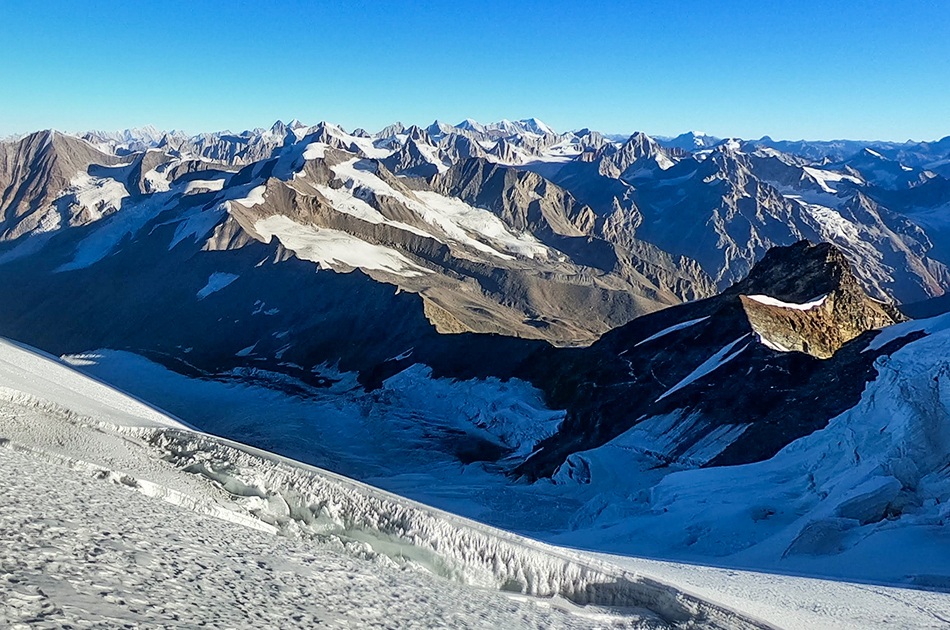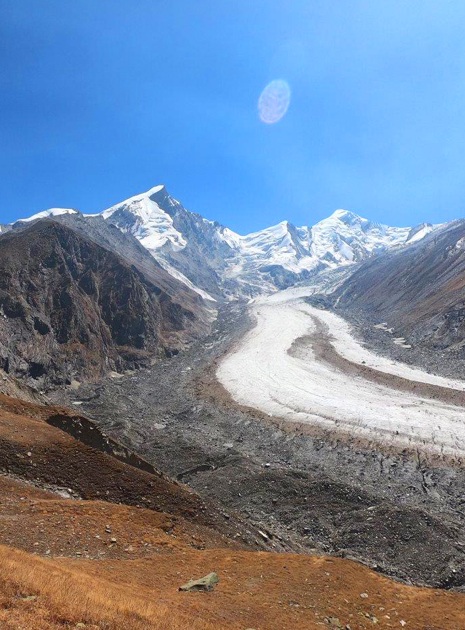Since the conditions on high-altitude are unpredictable, there is a constant readjustment of plans to adapt to the situation at the time. Providing fixed day-wise schedules is hence tricky. But roughly, the schedule includes rotation rounds between camps which is a standard acclimatization process on high-altitude expeditions. Black Peak has 3 camps after base camp: Advanced Base Camp (4,600M), Camp 1 (5,100M) and Summit Camp (5,500M).
Given that high-altitude climbs demand a rigorous acclimatization routine, expeditions usually employ the method of making rotation rounds between camps so as to better adapt to the environment. Living the tenet of ‘climb high, sleep low’ which is a golden rule for survival in that altitude, we make multiple rounds between campsites. For Black Peak, specifically, we make two rounds. The first is when we ferry our load up to the next camp, leave our stuff there and then climb back down to the lower campsite to spend the night. The next day, we climb back up to the camp where we left our stuff and proceed to pitch out tents to now occupy the campsite. What this achieves is a three-fold benefit. Firstly, you can divide your weight between two days so as not to carry a massive amount in one trip. Secondly, it introduces the body to a higher altitude environment but gives it time to better adapt to it by not pushing it in this new height giving it a better chance to survive that altitude. Thirdly, for each time that you climb the same route, it tends to get easier and easier, refining your technique, skill and adaptation.
The entire length of the expedition will include proper acclimatization, rotation rounds, rest days and a possibility of 2 summit attempts in case of bad weather.
Base Camp (3,820M) to Advanced Base Camp (4600M): It’s a fair bit of altitude gain from Base Camp to Advanced Base Camp but a good trial run to get accustomed to the slopes and terrain of the peak. The trail takes you through grass lands, onto a bouldered section followed by a steep climb through a small patch prone to landslides which will take you into a moraine rich land and then onto a glacier. The climb should take close to 4-5 hours.
Advanced Base Camp (4,600M) to Camp 1 (5,100M): The terrain is similar to the one we ended with yesterday – moraines, glaciers and ice. You will start to realize that everything seems easier the second time around.
Camp 1 (5,100M) to Summit Camp (5,500M): With a majestic view of Swargarohini to the North and Bandarpooch to the south, we have now reached a terrain rich in hidden and open crevasses. Slowly adapt to the environment, terrain and its challenges to make your way to the top of the peak.
Summit Camp (5,500M) to Summit (6,387M): We push off for the summit in the dead of the night. Hence, one immediate challenge is the night cold and the violent winds of the altitude. The summit climb is fairly challenging and involves navigating vertical ice walls of a gradient between 70-75 degrees with a height of 75-85 feet. These sections will require the use of fixed ropes and jumars to climb until we make it to the ridgeline. As opposed to its brutal slopes, the summit of Black Peak is fairly flat. We aim to reach the very top of this gorgeous peak in 7-8 hours and start our descent soon after so as to make it to the sanctuary of our tents before the snow starts to get unstable. Remember to exercise extreme caution on your way down, for descends are known to be more ruthless than ascends.
With our first summit attempt on Day 10, we aim to reach down to Base Camp by Day 11, Ruinsara Tal by Day 12, Seema by Day 13 so as to drive back to Sankri, our trail head, by Day 14.





